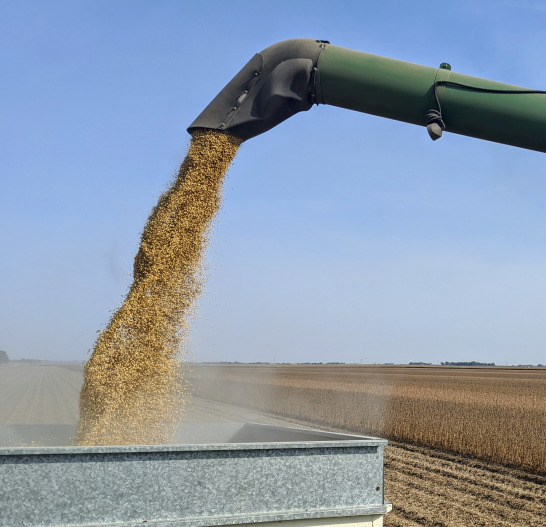| Upcoming Events: Sept. 29: N-Field Chat, 7 p.m., https://go.unl.edu/n-field-chat Sept. 29: Webinar: Preparing your garden for winter, 7 p.m., https://go.unl.edu/grobigredvirtual |
Bean harvest was rolling this week. Hearing non-irrigated beans in the area ranging from 40-60 bu/ac and irrigated beans going 70-90+. Regarding solar radiation and some wondering about smoke impact on drydown, I ran data from 9/1/20 though 9/26/20 for Harvard and York weather stations. Then looked at long term average for this same September time-frame from 1996-2020. Both stations showed slightly higher solar radiation in 2020 compared to the long-term average for September (York: 379 and 372 langleys respectively) (Harvard: 383 and 376 langleys respectively). And, it was higher yet for 2020 when I queried Sept. 10-26 for same time periods. So, unsure solar radiation was the factor impacting drydown for this part of the State?

Small Grains and Weed Control: Been watching weed control particularly in soybean fields. For future columns/winter programs, I’d like to hear from you. What weed control approaches have worked in your soybean and corn fields? I’m curious about all systems and all types of weed control options. Please share at jrees2@unl.edu or give me a call at the Extension Office. Thanks!
In the past, I’ve shared weed control begins at harvest by not combining patches of weeds or endrows full of weeds. I realize that’s difficult to do, and for many fields, we’re past this point. From a system’s perspective, another option to aid weed control is to plant a small grain such as wheat, rye or triticale this fall. We had a whole edition of CropWatch devoted to wheat production here: https://cropwatch.unl.edu/2020/september-4-2020. Wheat provides an option for both grazing and grain. Rye provides the best option for earliest green-up/growth in the spring and longest seeding time as it can be seeded into December. Triticale provides the most biomass but produces the latest into late May/early June. All keep the ground covered from light interception penetrating the soil surface which allows weed seeds to germinate. While I’ve observed this in farmers’ fields, there’s also recent research from K-State that supports the impact of a small grain in rotation for weed control.
One study looked at marestail (horseweed) and palmer amaranth control from 2014-2015 in no-till soybeans at six locations in eastern Kansas. They also found the majority of marestail emerged in the fall (research from UNL showed up to 95% does). They compared five cover crop treatments including: no cover; fall-sown winter wheat; spring-sown oat; pea; and mixture of oat and pea. Cover crops were terminated in May with glyphosate and 2,4-D alone or with residual herbicides of flumioxazin + pyroxasulfone (Fierce). Ten weeks post-termination, palmer amaranth biomass was 98% less in winter wheat and 91% less in spring oat compared to no cover crop.
Another study in Manhattan from 2015-2016 compared fall-seeded rye; a residual tank-mix of glyphosate, dicamba, chlorimuron-ethyl, tribenuron-methyl, and AMS; and no fall application. Four spring treatments included no spring application or three herbicide tank mixes: glyphosate, dicamba, and AMS alone or with flumioxazin + pyroxasulfone (Fierce) as early preplant, or as split applied with 2/3 preplant and 1/3 at soybean planting. They found the fall rye completely suppressed marestail while fall herbicide suppressed biomass by 93% and density by 86% compared to no fall application. They also found rye to reduce total weed biomass (including palmer amaranth) by 97% or more across all spring applications. In both studies, soybean yields were best with the combination of cover crop + herbicides or the combination of fall + spring herbicides compared to no cover and no herbicides.
The way I think about this for conventional systems is that the use of a small grain in the system reduces the pressure on the chemicals for having to provide all the control. It also buys some time for chemical control, perhaps even removing one application (based on these studies, small grain delayed at least a month till 50% palmer germination). Economically, while there’s the expense of seeding and purchasing the small grain seed, what are the other economics to consider? What could the small grain provide by reducing an additional chemical application, adding a forage crop after harvest, selling seed (if there’s a market), selling straw (depending on location for moisture savings & ability to get a cover back in for weed control), etc.? Just some considerations this fall looking at weed control by adding a small grain.


































